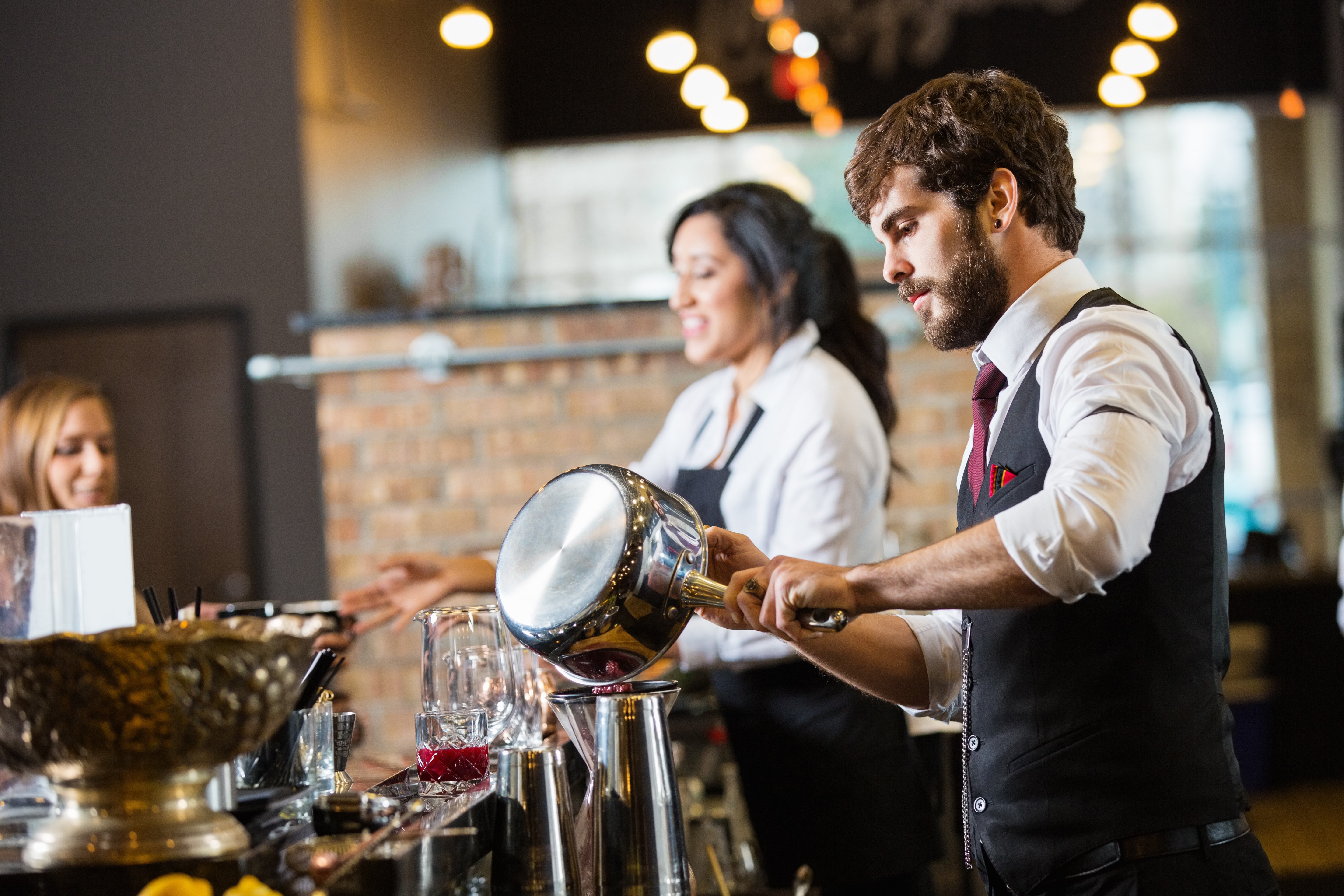Batching cocktails for a shift or event at your bar or restaurant allows for speedy service, consistency, less stress, and more time for the bartender to focus on your guests. There are many methods for batching cocktails that will give a professional bartender a good result. One thing is for certain: Many bars are still understaffed or undertrained, and no one wants to wait 15 minutes for their drink. Batching cocktails can be a good solution to keep your bar team and customers happy.
Batching cocktails is as much of an art as it is a science. Ask three beverage pros how they batch, and you will get three different answers. That is exactly what happened when celebrated beverage industry professionals Keli Rivers, Daniel de Oliveira and Livio Lauro weighed in to share their batching magic so your on-premise business can learn to make delicious cocktails with the same speed and ease of pouring a beer.
The best ingredients for batched cocktails
Mother Nature’s fresh ingredients, while tasty, are unstable and unpredictable. Fresh juices change when exposed to oxygen. The speed of oxidation can be slowed by doing the following:
- Add more sugar by using syrups
- Use an airtight container
- Store batched cocktails in a cool place
Southern Glazer’s of Illinois Director of Mixology Daniel de Oliveira said, “When a cocktail is all spirits, batching is a breeze! Look out for citrus, whether pasteurized or not. Citrus is tricky. It is hard to gauge how long a citrus batch will last. Sure, alcohol and sugar act as a natural preservative, but the quality of the citrus, temperature, and so many other variables will decide how long the batch is good.”
Omitting juices altogether will avoid the headache of expiration date guesswork. Powdered malic and citric acids are a good alternative to fresh juices.
Bitters are also a common ingredient in cocktails — classically known as the salt and pepper of cocktails. Potable bitters are enjoyed as a secondary ingredient, measured in ounces, and support a cocktail’s structure. Non-potable bitters are a flavor essence measured in dashes made to lift a cocktail’s aroma and boost ingredients. A dash can be defined as .02 oz. Avoid being heavy handed while adding bitters to a batch. Typically, less is more, as their taste can easily overpower a cocktail.
Carbonated liquids should never be batched. “I’d love a flat cocktail,” said no one ever. Ginger beers, soda, and sparkling wine should be used to top off a cocktail upon serving.
The keys to batch cocktail formulas and dilution
A batch formula is scaling a single cocktail recipe to multiple cocktails. Methods include converting ounces to parts or simple multiplication.
“I try to make it as simple as possible using the natural size of the bottle,” said Keli Rivers, Icon of Gin Ambassador 2021 and Sipsmith® Senior Brand Ambassador. “A 750 ml or liter is my north star. I find it to be more accurate in the final batch than using a measuring cup, which leaves a lot of room for error. This why I don’t add drops or dashes into the batch.”
“I also add anywhere from 10 to 20% water to my batch, depending on how the cocktail will be mixed (stirred or shaken), as I find that some bartenders subconsciously will undermix batched cocktails,” she adds. “I liken it to proofing down gin after it has been distilled to let it rest a little to keep the flavors from coming out of harmony with each other.”
Beverage industry legend and Southern Glazer’s of Nevada Master Mixologist Livio Lauro said, “For massive Las Vegas events, I prefer to serve drinks on the rocks and add 10% water to the batch before pouring over ice at time of service. For shaken drinks that need to be served with speed like dessert drinks, adjust dilution to 20% and keep the batch cold in an ice bath. Agitate the container before pouring into a glass.”
Which cocktails are best for batching?
Now that we learned how to batch, the question of which cocktails to batch remains.
Keli Rivers has extensive experience working in bars and running beverage programs. She shared her insight on how to know which cocktails to batch.
“Before batching a drink, I would look at my end-shift reports to find the top-selling cocktails, as well as where we could find steps to speed up the process of getting cocktails into the hands of guests,” she says. “This was followed by a meeting with my bar team for their opinions. The following questions are key to gaining insights from your bar team, since they are the ones serving customers every night.”
Will batching make your job easier?
Will batched cocktails allow for more time with your guest?
Would batching only certain ingredients be useful to execute multiple cocktails with consistency?
Will the batch allow for alterations requested by guests?
Will the batch create less waste?
We can all agree that getting our bartenders out of the weeds and back into providing great service to guests is ideal. Batching should not replace the finesse of bartending but should create space for guest engagement.
Daniel de Oliveira said it best: “If you’re a high-volume establishment, batching is good, but if you are a small craft cocktail bar, let’s keep the bartender performance romance. I want to see you measure the .25 oz demerara syrup in my Old Fashioned. It gets me going!”
Learn more from the cocktail experts at Southern Glazer’s
With more certified experts than any other wine and spirits distributor in North America, Southern Glazer’s can help you enhance your bar program, refine your cocktail menu, and boost your business’s bottom line. Not working with us yet? Become a customer today.
Keep up with innovators in the beverage industry and join in on the conversation by listening to “Served Up,” hosted by Southern Glazer’s own Bridget Albert, on your favorite podcast platform.
Bridget Albert
Sr. Dir. External Communications
Date Published
September 17, 2025



